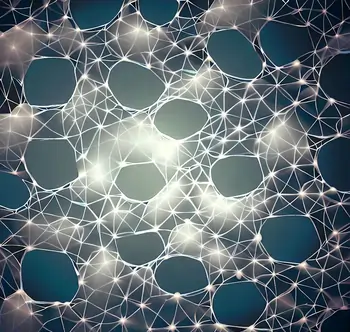Voronoi Diagrams and Their Applications in Computational Geometry

Computational geometry is a fascinating field that deals with solving geometric problems using algorithms and computers. One of the fundamental concepts in computational geometry is the Voronoi diagram, a mathematical structure with a wide range of applications. In this blog post, we will explore what Voronoi diagrams are, how they work, and their various applications in computational geometry. And for those of you looking to complete your geometry assignment, understanding Voronoi diagrams could be incredibly beneficial.
What is a Voronoi Diagram?
A Voronoi diagram, also known as a Voronoi tessellation or a Thiessen polygon, is a partitioning of a plane into regions based on the distance to a given set of points in the plane. Each region, called a Voronoi cell, is associated with a specific point, and every point within that region is closer to the associated point than to any other point in the set.
How Voronoi Diagrams Work

Voronoi diagrams are geometric constructs that elegantly partition a plane into regions based on proximity to a set of input points, known as "sites" or "generators." These diagrams are widely used in various fields due to their ability to provide insights into spatial relationships. Let's take a deeper dive into how Voronoi diagrams work by breaking down the key steps involved in their construction.
1. Point Placement
The foundation of a Voronoi diagram lies in the placement of points in the plane. These points, often referred to as "sites" or "generators," are strategically positioned to represent specific objects, locations, or features in a spatial dataset. Depending on the application, the sites can be generated in various ways:
- Randomly Generated Points: In some cases, Voronoi diagrams are created for randomly generated points. For example, in computational simulations or modeling natural phenomena, random sites might be used.
- Real-world Data: In practical applications, the sites may represent real-world entities like cell towers, delivery centers, or geographic landmarks. Geographic Information Systems (GIS) often utilize Voronoi diagrams with sites representing such features.
- Regular Grid: In certain cases, sites can be placed on a regular grid, providing uniform coverage of the plane. This approach is commonly used in mesh generation for computer graphics and finite element analysis.
2. Voronoi Cell Creation
Once the sites are placed, the next step is to create the Voronoi cells. Each Voronoi cell corresponds to a single site and contains all points in the plane that are closer to that site than to any other site. This definition is crucial in understanding how the cells are constructed.
The process begins by considering one site at a time. For each site, the algorithm computes the boundary of the Voronoi cell associated with that site. This boundary is formed by the perpendicular bisectors of the line segments connecting the site to its neighboring sites.
To elaborate further:
- For each pair of neighboring sites (the site being considered and its neighbors), the algorithm calculates the perpendicular bisector of the line segment connecting them. This bisector is essentially the line equidistant from the two neighboring sites.
- The Voronoi cell for the site being considered is the region enclosed by the half-planes defined by these perpendicular bisectors. These half-planes collectively form the boundaries of the Voronoi cell.
- The boundary of a Voronoi cell may consist of line segments, rays, and possibly unbounded regions, depending on the arrangement of neighboring sites. Voronoi edges are formed where the half-planes intersect, and Voronoi vertices occur where three or more edges meet.
3. Tessellation
The final step in constructing a Voronoi diagram is tessellating the plane into these Voronoi cells. This tessellation results in a partitioning of the plane where each cell corresponds to one of the input sites. Each cell contains all the points in the plane that are closer to its associated site than to any other site.
The tessellation process can be visualized as coloring each Voronoi cell with a distinct color or label. These labeled cells define the regions of influence or proximity associated with each site.
In practice, creating a Voronoi diagram involves efficiently implementing the steps mentioned above. Various algorithms have been developed to compute Voronoi diagrams, each with its strengths and weaknesses, depending on factors like the number of input points, dimensionality of the space, and specific requirements of the application.
Understanding how Voronoi diagrams work and the principles behind their construction is essential for leveraging their power in various computational geometry and spatial analysis tasks. Whether it's finding nearest neighbors, analyzing geographical data, or generating complex meshes, Voronoi diagrams provide a versatile tool for solving a wide range of spatial problems.
Applications of Voronoi Diagrams in Computational Geometry
Voronoi diagrams have a wide range of applications in computational geometry and related fields. Let's explore some of the most important ones:
- Nearest Neighbor Search
- Geographic Information Systems (GIS)
- Mesh Generation
- Pattern Recognition and Image Processing
- Robotics and Path Planning
- Art and Design
- Natural Phenomena Modeling
One of the primary applications of Voronoi diagrams is in finding the nearest neighbor to a given point in a set of points. Each Voronoi cell corresponds to a site, and the site's associated Voronoi cell contains all points closest to that site. This property makes Voronoi diagrams useful for spatial indexing and efficient nearest neighbor search algorithms in databases and geographic information systems (GIS).
GIS applications often involve analyzing spatial data, such as mapping, location-based services, and site selection. Voronoi diagrams can be used to model regions of influence, such as service areas around facilities or territorial boundaries for administrative regions.
In computer graphics and finite element analysis, Voronoi diagrams are used to generate meshes for 3D models. The Voronoi cells can be used to partition a region into smaller, irregular polygons or triangles, which can then be used to approximate the shape of the original object or terrain.
Voronoi diagrams play a role in pattern recognition, especially for feature extraction and object segmentation in images. By associating each pixel with the nearest site in a Voronoi diagram, images can be divided into regions that represent different objects or textures.
In robotics, Voronoi diagrams are employed for path planning and obstacle avoidance. By constructing Voronoi diagrams from the locations of obstacles and target destinations, robots can find optimal paths that avoid collisions.
Voronoi diagrams are used in art and design to create aesthetically pleasing patterns and textures. Artists and designers often apply Voronoi-inspired shapes and structures in various media, from architecture to digital art.
Voronoi diagrams are also used in natural sciences to model various natural phenomena, such as the distribution of plant roots, crystal growth, and the formation of honeycomb patterns in beehives.
Challenges and Considerations
Voronoi diagrams are undoubtedly a valuable tool in computational geometry, but like any mathematical concept, they come with their own set of challenges and considerations. Here, we will delve deeper into these challenges to gain a better understanding of the intricacies involved when working with Voronoi diagrams.
Computational Complexity
One of the primary challenges when dealing with Voronoi diagrams is their computational complexity, particularly when constructing them for a large number of points or in higher dimensions. The process of generating Voronoi cells involves multiple calculations, comparisons, and iterations, making it a resource-intensive task. As the number of input points increases, the computation time can grow significantly.
In lower dimensions, such as 2D, algorithms like Fortune's algorithm and incremental algorithms can efficiently compute Voronoi diagrams. However, in higher dimensions, the computational burden increases exponentially. This issue becomes particularly pronounced in applications involving large datasets or real-time processing, where rapid computation is essential.
To address this challenge, researchers and software developers have devised specialized algorithms and optimizations to make Voronoi diagram construction more efficient. Parallelization and algorithmic improvements help mitigate the computational complexity, making it feasible to work with larger datasets and higher dimensions.
Boundary Handling
Voronoi diagrams are inherently unbounded; they extend infinitely in all directions. While this property is useful for modeling spatial relationships without constraints, it can pose challenges when working with finite regions or boundaries, which is often the case in practical applications.
Consider, for example, a Voronoi diagram that represents the service areas of different delivery centers in a city. In reality, these service areas are constrained by the city's boundaries, roads, and other geographical features. Handling this discrepancy between the idealized Voronoi diagram and the real-world constraints is essential for accurate analysis.
Special techniques and heuristics are required to adapt Voronoi diagrams to finite regions effectively. These techniques involve "clipping" the Voronoi cells at the boundaries, ensuring that each cell remains within the desired area. Additionally, handling boundary cases, where Voronoi edges intersect or cross the boundary, requires careful consideration to avoid artifacts in the results.
Degenerate Cases
Another challenge that arises when working with Voronoi diagrams is the occurrence of degenerate cases. These are situations where the input points exhibit special configurations that can disrupt the standard Voronoi diagram construction process. Two common types of degenerate cases are:
1. Multiple Sites at the Same Location: When two or more input points coincide at the same coordinates, the Voronoi diagram becomes less intuitive. In this scenario, the Voronoi cells associated with these coincident points overlap, creating ambiguity in the partitioning of space.
Addressing this challenge involves defining rules for handling coincident points. Should the Voronoi cells merge into a single cell, or should they be kept separate? The choice depends on the specific application and the desired behavior.
2. Collinear Sites: When three or more input points are collinear (lying on the same line), the Voronoi diagram can exhibit irregular behavior. Voronoi edges associated with collinear sites may extend indefinitely and cross one another, making the diagram difficult to interpret.
Handling collinear sites requires additional processing to simplify the Voronoi diagram and resolve any inconsistencies. This often involves identifying and removing redundant Voronoi edges and vertices.
In both cases, careful consideration and special handling are necessary to ensure that Voronoi diagrams remain useful and meaningful even in the presence of degenerate cases. Software libraries and tools that work with Voronoi diagrams typically include provisions for dealing with these scenarios, but users should be aware of their potential impact on the results.
Conclusion
Voronoi diagrams are a powerful tool in computational geometry, offering a versatile way to partition space based on proximity to a set of points. Their applications span a wide range of fields, from computer science and mathematics to art and design. Whether you're designing efficient algorithms for spatial data processing or creating visually stunning patterns, Voronoi diagrams are a valuable resource in the world of computational geometry. As technology continues to advance, their importance and utility are likely to grow even further.